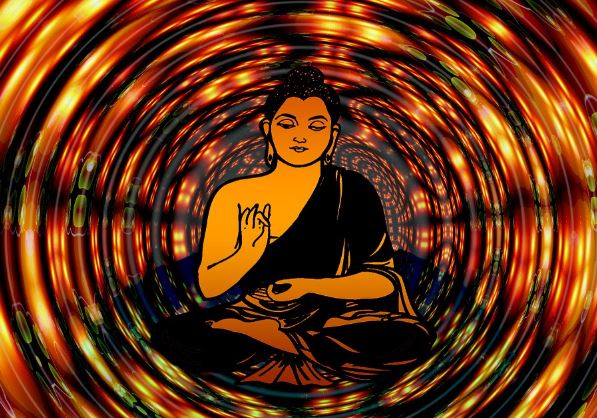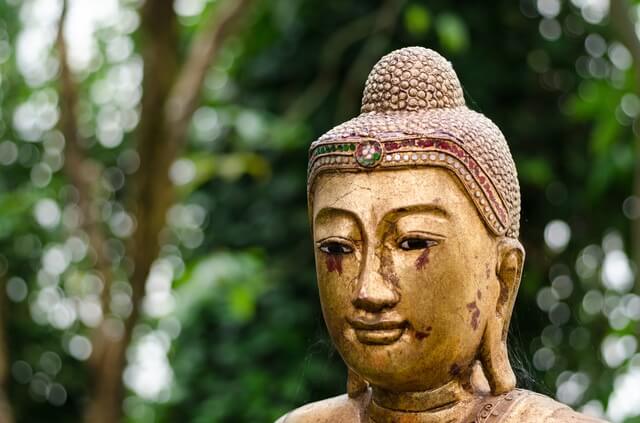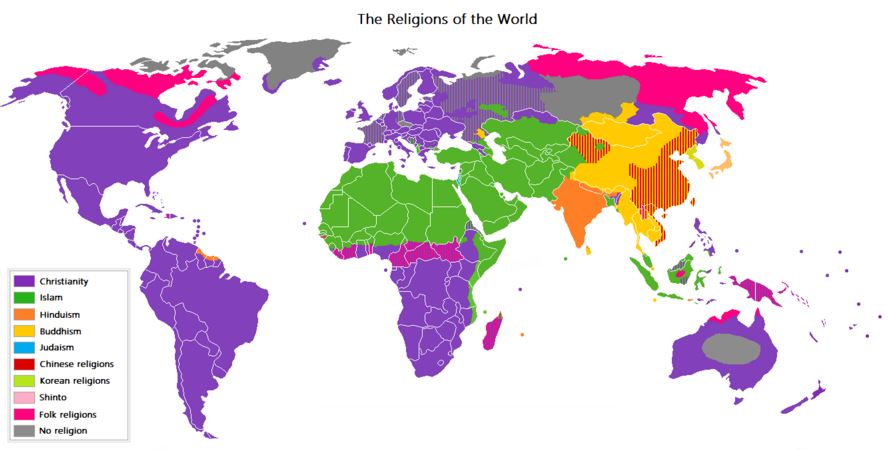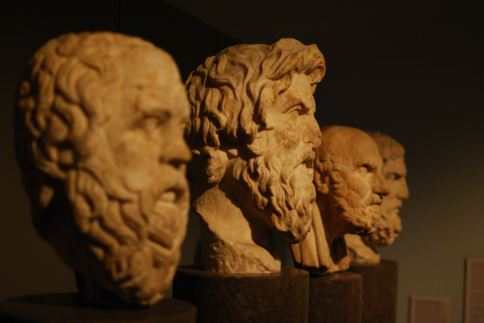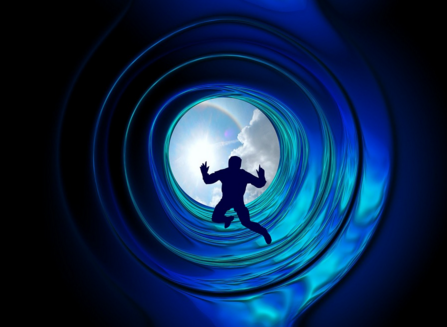Reborn After Death. Most Westerners think that reincarnation, the concept of being reborn after death, is an Asian popular belief, according to which people are born again and again, following the law of karma. Although this idea is essentially correct, it ignores two other fundamental aspects of the doctrine: first, the fact that reincarnation occurs between one and another life, but it also constantly operates in ordinary life; and secondly, that reincarnation occurs differently in the case of ordinary people and saints.
Reborn After Death: The Maya Belief
The Maya believed in life after death, because to them life was an endless moment.

“For the Maya, life and death are indispensable complements.” states Dr. Vera Tiesler, a researcher at the Autonomous University of Yucatan, she explains that for the Maya, death was not a final destination, but “they had the notion of constant becoming, therefore there are phases of destruction and phases of creation”.
Read also: What Religions Believe In Reincarnation?
For them, each person had a sacred heart formed by a series of psychic components transiting through the space of cosmos, says the specialist in Mayan culture and skeletal anthropology.
The Sacred Heart contains emotions, understanding, moods, personal values, memory and will. These psychic components are independent of the body, they are not quantifiable and are located in the whole body and breath. “The heart is not a unitary element, but a psychic flow capable of spreading through various parts of the body.”
In death, some of these psychic components are destroyed by the body, some returning on the day of the faithful departed and others traveling to the underworld along with its physical body, where they are cleaned from every transgression and personal history and reinserted in an element or individual for the start of a new life, says Martínez González, awarded the 2011 Prize for Research in Social Sciences, by the Mexican Academy of Sciences.
Roberto Sandoval Romero, master of Mesoamerican studies at UNAM, said that for the Maya, “death does not mean annihilation”.
“In their culture man is conceived with a dual nature, ie, the union of body and soul identity, which are separated at the time of death to dwell on the places of the cosmos, including the underworld, called Xibalba, which translates as ‘the place where they fade'”, says Sandoval.
The descent into the Maya underworld
Cyclic life of the Maya exists in a cosmic space held by the branches, trunk and roots of a monumental sacred ceiba tree, considered by this culture the axis of the world, explains Tiesler.
The ceiba tree is fundamental to understand the idea of being reborn after death, it is the communication bridge between three levels of existence: heaven, earth and underworld.
“Heaven is conceived as a pyramid of 13 levels, the earth as a square plate and the underworld like an inverted pyramid of nine bodies,” describes Roberto Romero Sandoval, researcher at the Center for Maya Studies, the Institute of Philological Investigations of UNAM .

“Heaven is intended for those who died in war and sacrifices, and possibly women who died during childbirth. Another space was a kind of earthly paradise, a place where there was plenty of food and drinks, and the center was a ceiba tree” he explains.
The Popol Vuh or sacred book of the Mayas, describes the descent into the underworld as a path of tests to overcome, indicates Romero Sandoval. To get there, you need to go down some steep stairs, through rapids, blood and water, and go through some thorny calabash trees.
Going through water represents the destruction, the return to an original state and being reborn after death. Going down to the underworld means acquiring knowledge, because the underworld is a fertile and watery place. Priests and shamans came to the underworld through rivers, springs, cenotes, rocky coves, caves and volcanoes, according to Romero Sandoval.
“In the last level of the underworld the body fades and becomes a skeleton. One becomes like the Lord of Xibalba, as the God of Death. The God of Death has vital traits, although it is a skeleton, he has eyes, so he can see, know the world he inhabits.” Unlike Christians, for the Maya, the sacred is on earth, where life arises and not in heaven.
The Maya gods who bring disease and death
The Maya believed that the day of their death was determined by the gods of Xibalba (the underworld). The Popol Vuh explains that these deities were who sent diseases that kill men, says researcher at the UNAM, Roberto Romero Sandoval.
Sandoval and Dr. Ana Cecilia Rodriguez Romo, an expert in the history of medicine, identified some medical conditions with descriptions of the disease caused by the gods: “Ahalpuh and Ahalganá swelled men, probably this was when they sent hydrops disease; They made them sprout pus from their legs, or gave them yellow faces (hepatitis).
Chamiabac and Chamiaholom made men thin, ie, to suffer anemia. Ahalmez and Ahaltocob caused accidents when the men returned to their homes, and Xic and Patan caused sudden death, pressing their chests until they vomited blood.
The Maya burial
Burials for the Maya meant to honor the earth and bring the dead to the underworld, so that they would return with the gods who gave life, says Hector Camilo Sanchez Beltran doctor of psychology and specialist in anthropology at the University of Guadalajara (University of Guadalajara).
“The funeral was the process where the person left material life and returned to the psychic identity. Ordinary people would normally buried in the floor of their homes, while the hierarchs had special tombs,” he says.
The funeral of the hierarchs were public and lasted two or three days. “They used to bury their bodies shrouded and cover them with red pigment before putting them in their graves. They would add an abundance of luxury items, including bodies of killed people.”
Read also: What Happens After You Die? The Connection Between Life and Death
Human sacrifice was conceived as the highest religious expression, which allowed the intervention of the gods and ensured the collective well-being, while the offerings facilitated their transition to the hereafter and showed the power of the hierarchs” says Vera Tiesler.
For the Maya, bones symbolize firmness and strength, says Romero Sandoval, therefore, the ancient Maya performed various rituals around death. “One of these rituals is still performed in some populations, such as Pomuch in Campeche which is to exhume the body, clean the bones of their ancestors and place them in cinnabar powder. Cinnabar is a mineral found in earth that the Maya used as red dye. This color represents rebirth, as it relates to the East, the place where the sun rises. This ritual represents “life in the hereafter, that is, immortality, being reborn after death” says the expert.
To Be Reborn After Death: What the Buddhists Believe

Buddhism, like other religions, is interested in death and rebirth not only for the benefit of the dying and the dead, but also to help the living. Buddhist teachings on death and rebirth have traditionally been applied to instruct the dying, helping the bereaved understand and accept the death of a loved one, and even to assist the deceased in continuing their journey. In addition, lessons include meditation practices that people should cultivate in order to prepare for their own death, but also to investigate the foundations of the mind. In Tibet, for example, an advanced practice was a meditation that reproduced the experience of psychological dissolution that occurs at the time of death. By acquiring consciousness of an unknown and frightening territory, the meditator could go beyond the conditioned consciousness and contact the unconditioned, radiant and free of obstructions core of the mind.
Ordinary rebirth: death and reincarnation in successive lives
According to Buddhism, when the physical body dies, our mind, which is, in fact, a more subtle form of consciousness is separated from it. In life, consciousness is shaped and conditioned by karmic tendencies that the person has accumulated over countless lives and, upon death, the subtle consciousness brings these trends, in transit to the Rebirth. During the process of death, after successive extinction of the senses, the consciousness withdraws to its resting place in the center of the heart. In the case of an ordinary person, conscious perception decreases gradually and with death befalls a loss of consciousness, similar to what we experience when we fall asleep. After some time we wake, but at first do not even notice that we have died, until, say the texts, certain experiences reveal what happened: when we try to talk to our family or friends, they do not perceive our presence or hear our words; if we stand facing the sun, we do not project any shadow; if we walk on the sand, we do not leave footprints. Finally, we realize that we have separated from life, that we have died.

Then follows an after-death experience, which can be a short or very prolonged state. According to Tibetan tradition, with death a period lasting 49 days begins, during which we exist in the bardo, the intermediate state between death and rebirth. It is a purely mental existence; consciousness has only a very subtle body, created by the mind. In this state we still have experiences, but, not being grounded to physical existence, they are extraordinarily vivid, strange and frightening. Ordinary consciousness craves desperately to find a new physical incarnation, reaffirm its existence, for which it seeks what is familiar or, in other words, the same kind of situation where it was when it died. In Buddhist terms, it tries linking to a situation that matches one’s karmic state at death.
In its search for a body and an a familiar environment, consciousness is attracted to a man and a woman whose union can offer it the karmic continuity it craves. According to Buddhism, conception occurs when, on the one hand, a female can get pregnant and, on the other, a consciousness seeks the karmic situation that will arise from this conception. When these conditions concur, “fertilization” takes place, the woman becomes pregnant and the consciousness finds a new home.
Being reborn after death
But not all are reborn into human bodies. The accumulated karma of some individuals leads them to other realms of existence. In Buddhism six are known all of samsaric nature and conditioned by karma, but different from the relative amount of suffering or happiness that exists in each of them. They are divided into three lower realms: the hell beings, hungry ghosts and animals, and three higher realms: that of humans, demigods and gods.
Read more here: Taoism: Reincarnation And Return Of The Soul In Taoism
Ordinary rebirth from one moment to another, in the span of a lifetime

The doctrine of reincarnation as the transition from one life to another, or as to be reborn after death, is related to a more subtle conception, according to which the reincarnation takes place within the same functions of the mind. Buddhism teaches that the concept of a strong and continuous “self” does not come from reality, but it is an idea we impose on our fundamental experience of transience and discontinuity. However, we cling to the existence of a “self” because we long to be, to exist, to be more, to gain more power and control, never to cease, never die. The opposition between our eagerness to see a solid “self” and the very fact that it does not exist is what produces the continued suffering of human existence. When reality is not what we want and we persist in so, what results is suffering. The more we deny what we really experience, the more intense is our pain; The more we fight, the more self-centered, neurotic, indifferent to others and perverse we become.
However, the experience of impermanence and discontinuity that we all feel, no matter how subliminally, reveals the perception of an exceptionally clear intelligence. It is this intelligence inherent in all beings, which sees things as they are (yathdbhutam). This perception or intelligence precedes the ego and is what is called Buddha-nature (buddha-gotra), essential to every human being. On the contrary, the belief in a permanent “self” is contingent, incidental and relatively superficial. It can ensure a greater or lesser degree of Buddha nature, but it can not destroy, damage or even tarnish it. For much we try to deny what is true (that there is no “self”) and insist on what is not there, we will never succeed entirely. The more neurotic is our attitude in this regard, the more we fight to defend our enthusiasm and will harm others as a result.
According to Buddhism, the conventional concept of death is inextricably linked to the idea of a “self”, because it presupposes the idea of something that really exists today and that, at some point, ceases to exist. While, for us death means extinction of the “self” we consider to be, actually that occurs constantly, at every moment of existence. The idea of “me” (and “me” is nothing but an idea), like the rest of our concepts, is born, lives temporarily and disappears. In other words, the death of the “self” we fear is an integral and ongoing part of our experience. However, we do not even notice it because of our fear of nonexistence, our willful ignorance and the inertia of our avoidance strategies, known as karma, which we have developed over countless lives. But, as we mentioned before, we are subliminally aware of the constant death of the “self”, at every moment, and this is what makes us so afraid of physical death.
So every moment of life carries the death of our beloved “self”, death is followed by a rebirth, determined by ignorance and karmic formations, another “incarnation”, so to speak, of the idea of “me”. This continuous process of dying and being reborn, according to Buddhism, does not differ essentially from the process that occurs when we die and are reborn physically. The process is exactly the same, except that in death and rebirth from moment to moment we take the same physical body as the basis of our concept of “self” (our physical body in this life), while at physical death, we must look for another hardware, another body.
But an important question remains unanswered. If there is not a permanent “self”, what produces continuity from one moment to another and from one life to the next? Obviously, there is some kind of continuity: one becomes a completely different person each time, and Buddhism emphasizes the karmic continuity between successive lives. Put simply, what is reborn again and again is nothing but an idea, the idea of “me”; It is the strong belief that each person he or she is a substantial and continuous entity, which continues to ignore the reality of things. This ignorance is based on certain patterns of evasion, which remain from one moment to another and from one life to another. But such permanence is an illusion, not a substantial reality. Every moment of illusion conditions and results in the next moment of illusion, which will have the same structure. However, between one moment and another there is a period in which the illusory idea of the self could be banished. The succession of these ideas about the self, discontinuous but karmically linked, is called “flow of life” (samtana in Sanskrit, Nyen Gyü in Tibetan). The flow of life carries all the effects of past actions, and ignorance, these give rise to an endless series of rebirths. Each birth of consciousness is conditioned by the previous births and, in turn, determines the conditions of the following birth.
Video: BBC on Remembered Previous Lives
Read also: Why Do People Believe In Reincarnation?
This concludes our article on being reborn after death according to different beliefs. Keep reading this website to learn more about reincarnation, and share this information with your contacts to spread the knowledge.
